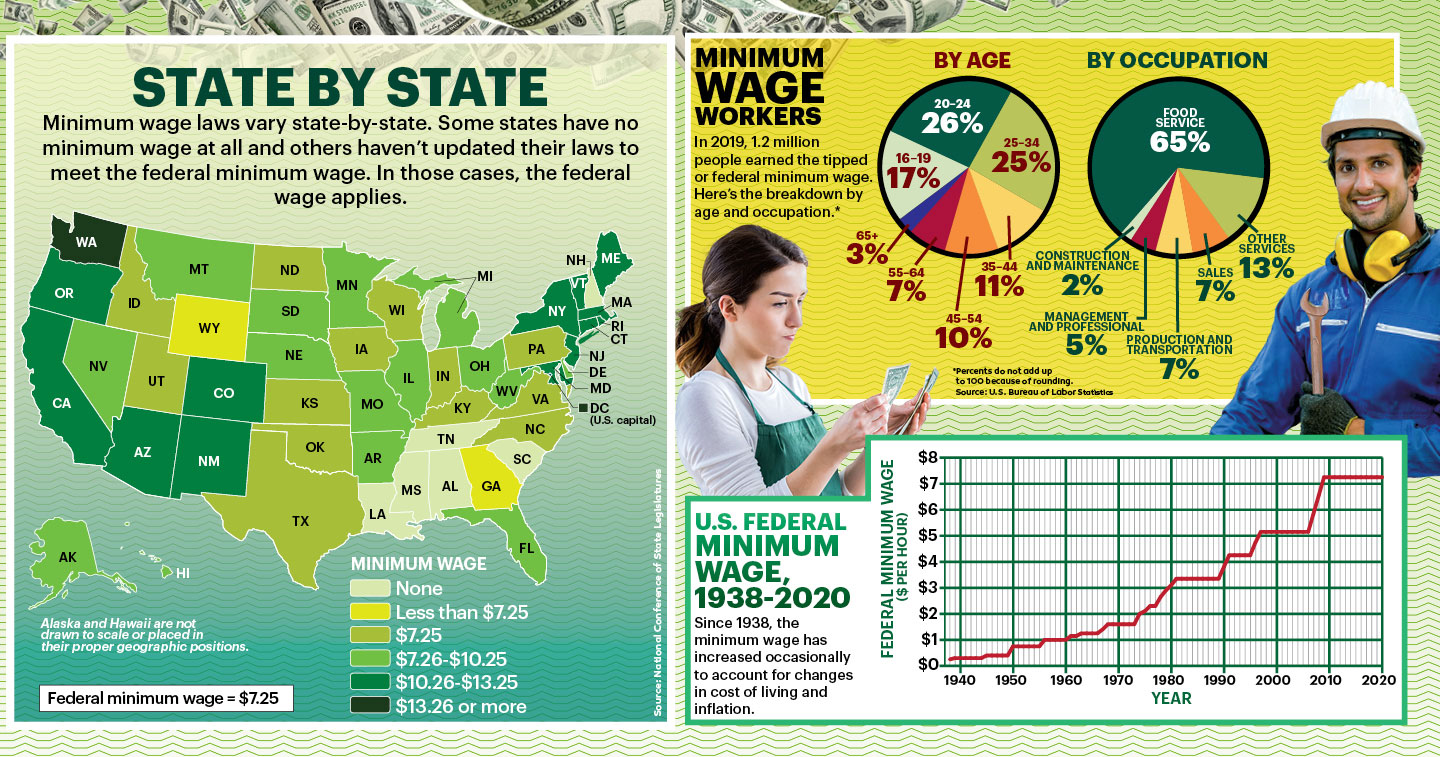A job as a lifeguard or store cashier will likely earn you the federal minimum wage of $7.25 per hour—unless you live in cities like Seattle, Boston, San Francisco, or Washington, D.C, where the minimum wage is higher. For years, people have been fighting to increase the minimum wage in cities and states across the U.S. Last fall, Florida’s citizens voted to raise the state’s minimum wage to $15 an hour over the next five years.
In the late 1800s, activists began calling for a minimum wage to ensure that all workers could live off their incomes. But it wasn’t established until 1938, when President Franklin D. Roosevelt signed the Fair Labor Standards Act. It set the minimum wage at 25 cents per hour, established a maximum workweek of 44 hours, and more.
In 2019, about 1.2 million workers were paid at or below the federal minimum wage. (Tipped workers, like waitstaff, have a lower minimum wage of $2.13 per hour.) None of those workers earned a living wage, which means they could not afford their basic needs like food or housing. Workers’ rights advocates are fighting to increase it to a living wage, which in 2020 is $12.60 an hour for a person supporting a family of four. Opponents argue that the increase in costs to pay workers might cause some businesses to close or raise prices.
As of press time, raising the federal minimum wage to $15 was part of President Biden’s Covid-19 relief bill. If passed, the country might get a raise like Florida’s.


